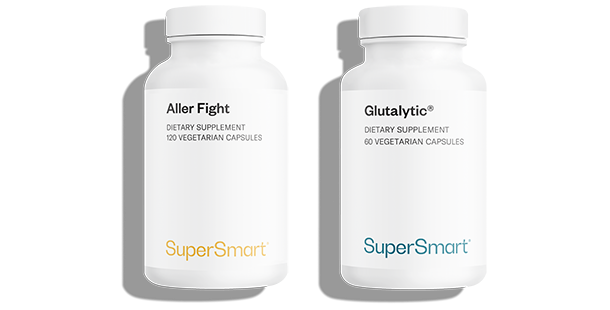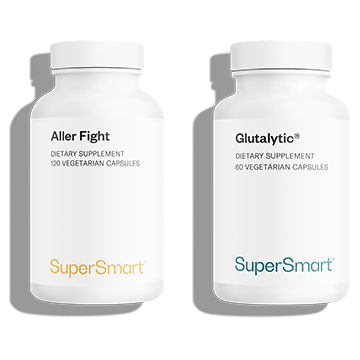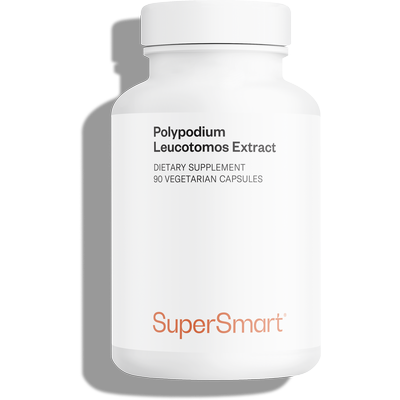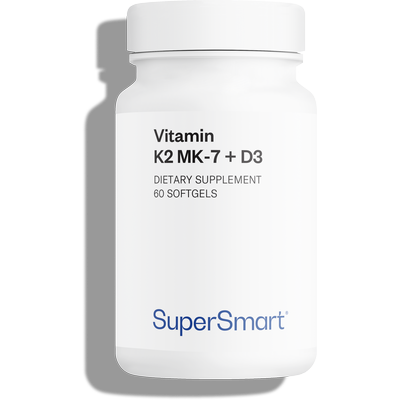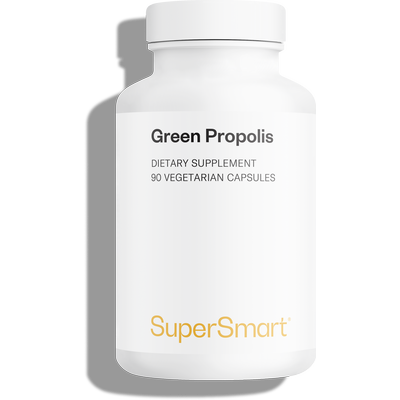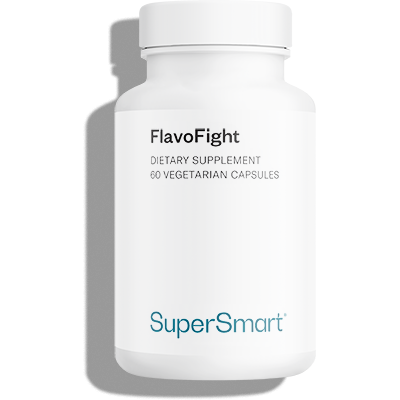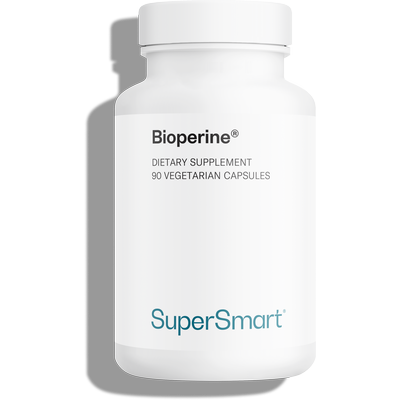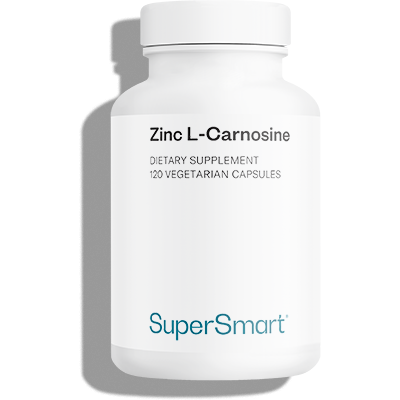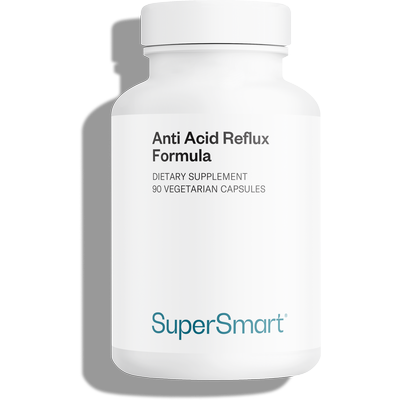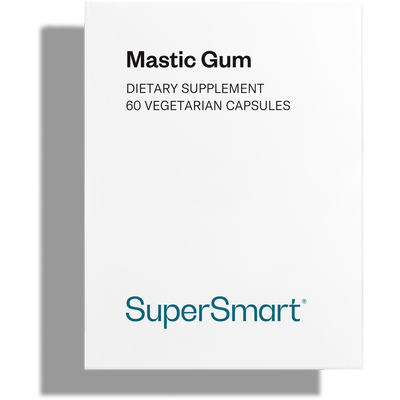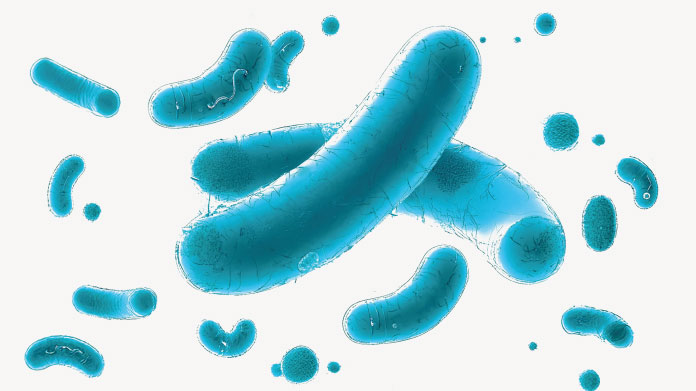
Glutalytic + Aller Fight
Complete your selection
What is in Glutalytic + Aller Fight
Any questions?
Here are 10 key techniques and natural remedies for tackling allergies:
- if you suffer with breathing allergies, air the rooms in your home every day (though if you’re allergic to pollen, keep the windows shut between 10am and 3pm during the flowering season) ;
- make sure you maintain a medium humidity level by buying a humidifier, for example, and setting it to 50% (dust and pollen circulate more easily in a dry atmosphere, while mould, which can also cause allergies, flourishes in moist air) ;
- avoid having carpets or rugs (or at least vacuum them regularly), remove your outdoor shoes before going inside and think about dusting. Don’t dry your sheets outside to prevent them getting covered in pollen ;
- wear sunglasses to protect your eyes from pollen, and relieve any irritation with eye drops(6) ;
- if you’re allergic to dust mites, use anti-dust mite mattress/pillow covers (7). And make sure you change your bedlinen regularly to prevent these tiny bugs from breeding ;
- if your problem is an allergy to your pets, keep them out of bedrooms ;
- if it’s pollution, avoid using busier roads to minimise contact with particle pollution ;
- don’t smoke (smoking can exacerbate allergy symptoms) (8) ;
- make an appointment with a health professional. He or she will be able to confirm which allergies you’re suffering from, using skin prick testing, and if necessary, prescribe medication or a long-term treatment called ‘desensitisation’(9) ;
- in the case of a food intolerance, adhere strictly to the diet recommended by your allergy specialist.
The amount of Glutalytic® to take depends on the amount of gluten consumed in a meal. For example, if you eat a large portion of pizza, the appropriate dose would be two capsules, whereas a half-portion of that same pizza would only require one capsule. Since Glutalytic® only promotes the digestion of gluten proteins, there is no point in taking it in a preventive capacity, in between meals. To generally improve the digestion and absorption of all food groups, it is preferable to supplement with the formulations Digestive Enzymes or Pancreatin, also available to buy at Supersmart.
In summary, taking one to two capsules of Glutalytic® would seem to be the perfect way of ensuring optimal digestive comfort when eating a gluten-rich meal. It is strongly recommended for anyone sensitive to gluten and for those who experience repeated digestion-related symptoms following consumption of gluten-containing foods.
Alongside Aller Fight, we’d also recommend taking a course of IsoQuercitrin. Isoquercitrin is a soluble form of quercetin, the most powerful of the flavonoids. It is highlighted in several studies as being beneficial for allergies (digestive, respiratory, ocular and others). This supplement contains a form of quercetin called EMIQ®, which offers exceptional bioavailability.
Gluten is a water-insoluble protein formed when gliadin and glutenin - two peptide components of flour from wheat, rye and barley - are mixed with water. Its sticky and elastic properties are very useful in making bread, pasta and pastry, helping them to keep their shape.
Gliadin and glutenin are poorly digested. Indeed some people cannot digest them at all. These undigested gluten proteins trigger the immune system to attack intestinal villi (small folds in the mucosa) which prevents these peptides from being absorbed correctly and results in serious problems in the gut as well as potential malnutrition. This is what is known as coeliac disease (or gluten intolerance).
However, another form of gluten intolerance has come to the fore in recent years: non-coeliac gluten sensitivity. As its name suggests, this has little to do with coeliac disease, displaying neither specific antibodies to the disease nor waste products in intestinal mucosa. Yet gluten consumption causes the same types of symptoms: abdominal pain, bloating, intestinal disorders, diarrhoea and constipation, as well as headaches, fatigue, joint and muscle pains, numbness in limbs, skin problems, depression, and anaemia. These symptoms generally come on after consumption of foods that contain gluten and disappear when they are eliminated, only to reappear when these foods are reintroduced. Around 13% of Western populations may be affected by this hypersensitivity – on top of those who are allergic to gluten.
Buy Glutalytic® to promote the digestion of gluten proteins.
This product’s capsules are composed of HPMC (hydroxypropyl methylcellulose), a plant substance derived from cellulose. HPMC is widely used for medicines and dietary supplements. It contains no animal ingredients, is recognised as safe by health authorities and is considered more sustainable than synthetic alternatives.
This product’s capsules are composed of HPMC (hydroxypropyl methylcellulose), a plant substance derived from cellulose. HPMC is widely used for medicines and dietary supplements. It contains no animal ingredients, is recognised as safe by health authorities and is considered more sustainable than synthetic alternatives.
Need help?
You may also like

